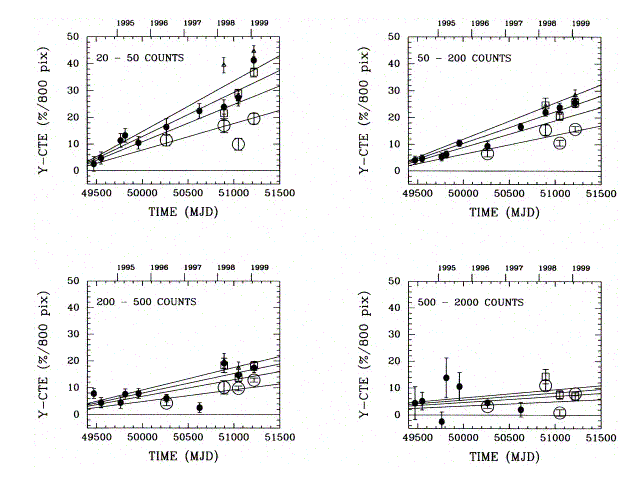
In order to prepare for changes which might occur to the SNAP detectors after launch, I have gathered information on the performance of several existing space cameras.
Let us compare their properties briefly:
WFPC2 ACS MOST
--------------------------------------------------------------------------
Maker Loral SITE Marconi 47-20
Form thick thinned thinned
front-illum back-illum back-illum
Pixels 800x800 2048x4096 1024x1024
15 microns 15 microns 13 microns
Full-well (e-) 90,000 85,000 100,000
Oper Temp (C) -88 -76 -37
--------------------------------------------------------------------------
Over the years since it was launched, WFPC2 has suffered from a gradual loss in overall sensitivity. Much, perhaps all, of the loss is due to degradation of the Charge Transfer Efficiency (CTE). The effect is largest in the "Y-direction" on the chip.

Correcting for this failure to move charge packets from pixel-to-pixel across the chip is complicated by the variation in CTE as a function of
Note that SNAP's primary mission of studying distant SNe Ia falls into a danger zone: we will be looking at very faint sources which are often immersed in a galaxy's light (though the galaxies will often have very low surface brightness, it's true), and comparing them to a group of faint comparison stars which presumably will be located in blank sky.
Changes in WFPC2's performance over its lifetime remain one of the largest sources of systematic error in the HST Key Project for measuring the Hubble Constant, as these two extracts from a recent paper (Freedman et al. 2001) show:
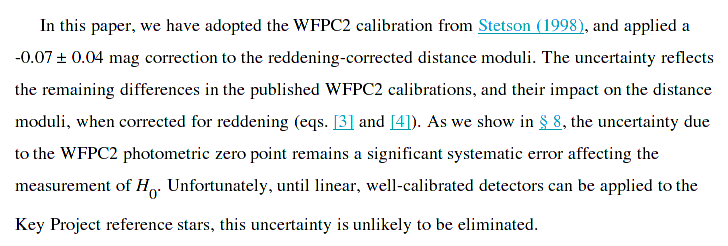
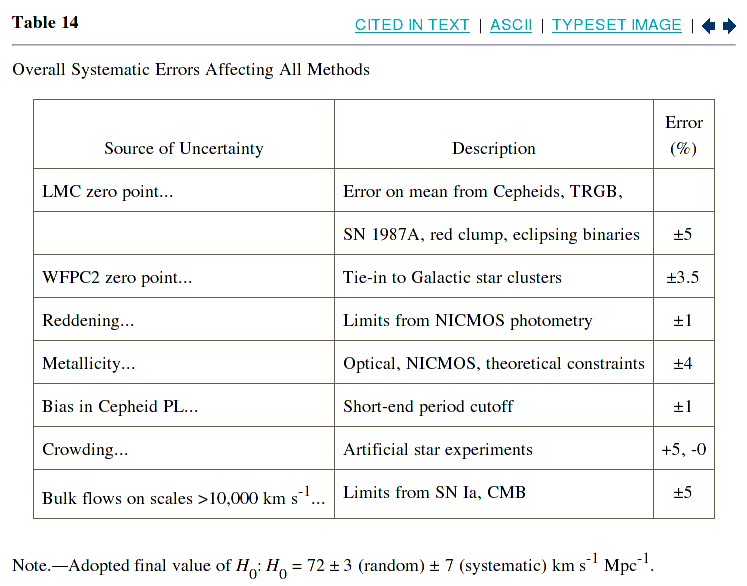
The phrase
... until linear, well-calibrated detectors can be applied to the Key Project reference stars, this uncertainty is unlikely to be eliminated.
gives some support to the idea that a rocket-borne detector be used to calibrate stars properly.
The Advanced Camera for Surveys on HST has been in service for only a few years, but it, too, shows a gradual loss in CTE. Like WFPC2, the effect is largest for faint stars, as one can see from actual measurements:
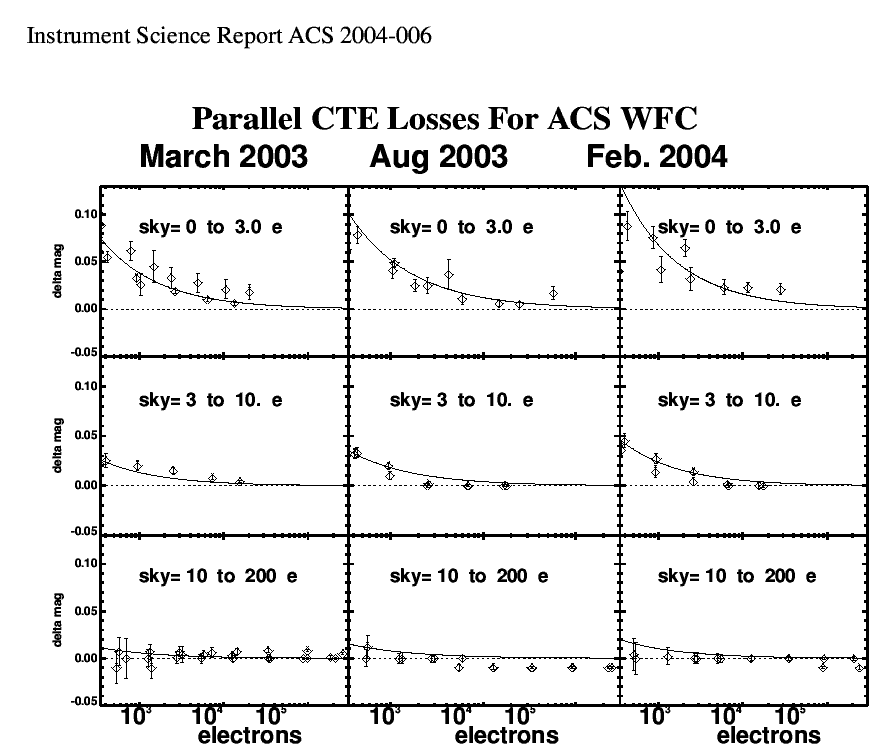
... and in a model fitted to the data:
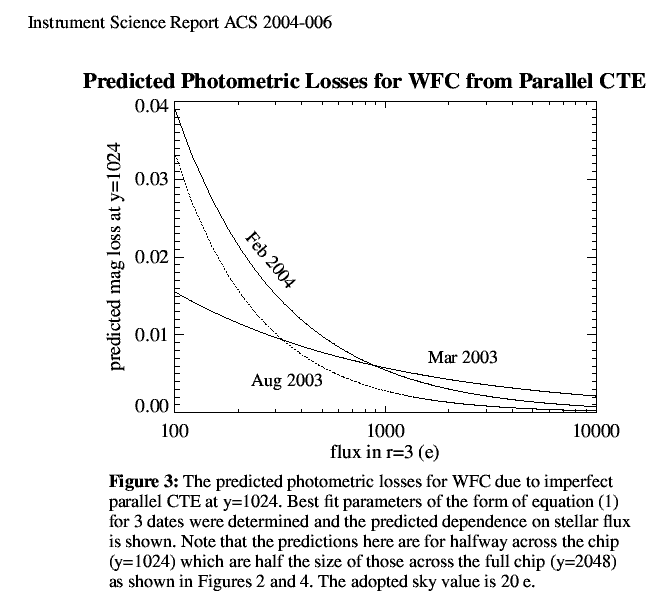
Note again that the size of the CTE loss in sensitivity varies depending on both the brightness of the target, and the brightness of the background.
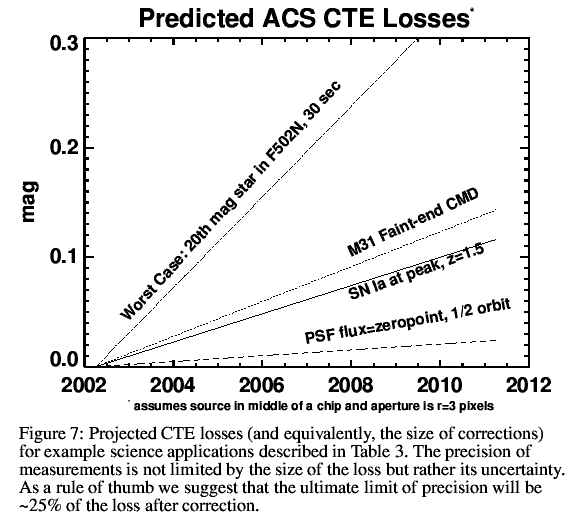
The overall sensitivity of ACS has been decreasing at a rate of about 0.004 mag per year. Ralph Bohlin tells me that this figure is separate from the CTE losses, and shared by ACS, STIS, and other HST instrument. It may be due to contaminants accumulating on the optics.
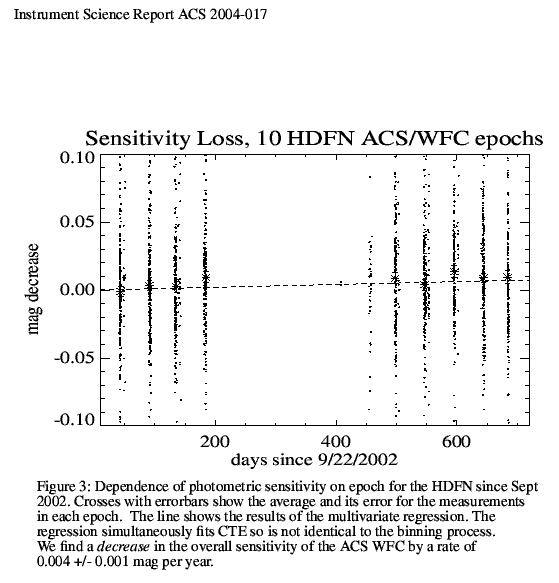
The most recent document I could find on this topic (Riess et al. 2004) states that it is not yet known if the loss in sensitivity depends on the filter.
The Microvariability and Oscillations of STars (MOST) satellite contains a small telescope which stares at a few selected stars for weeks on end, looking for pulsations which reveal the internal structure of the atmosphere. It has an unusual camera: two CCDs, one of which is devoted to tracking, the other to science. The science CCD is partially covered by a microlens array, which images the pupil of the telescope onto the focal plane.
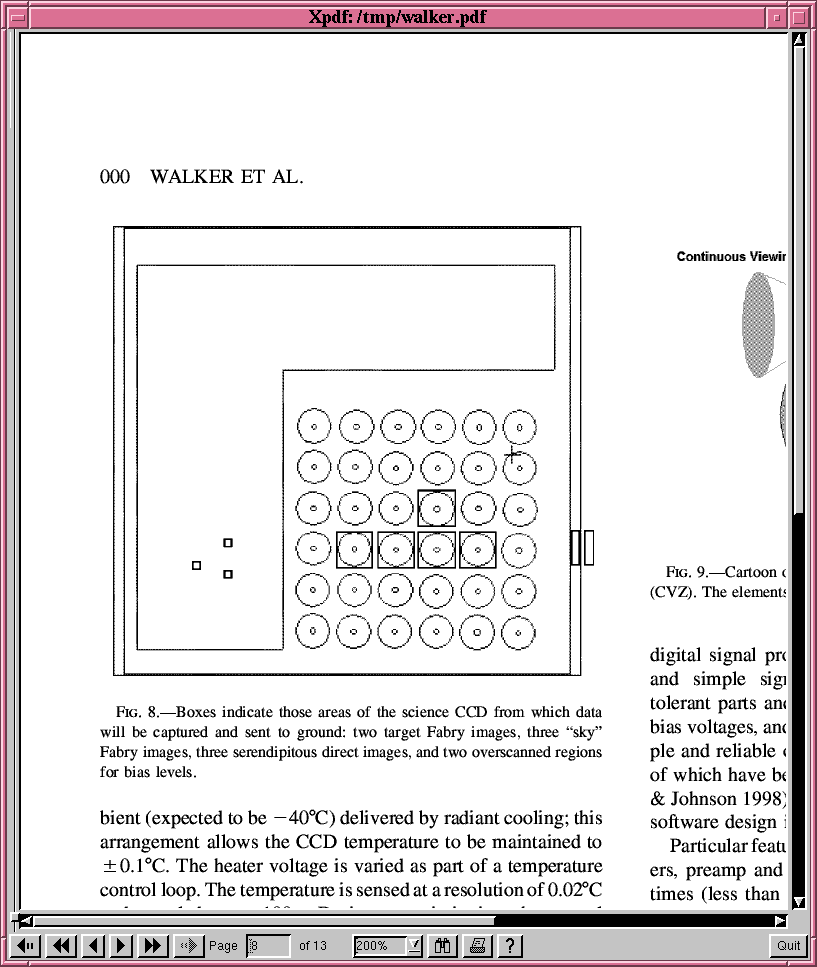
Typically, a single primary science target falls onto one of the microlenses, and cutouts around several fainter stars from the "ordinary" portions of the CCD are also monitored.
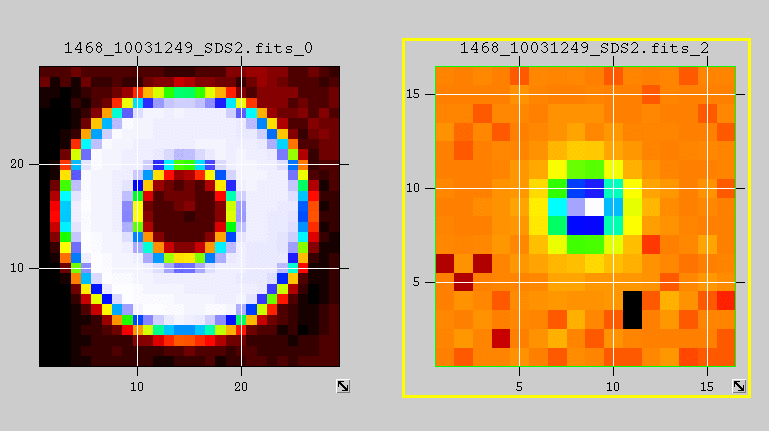
The satellite was launched on June 30, 2003. One of its first targets, and the only one for which data has been released to the public, was the bright star Procyon. It was observed continuously from Jan 8, 2004 to Feb 9, 2004. There were problems with scattered light from the Moon falling into the field of view during certain portions of the orbit, which increased the background levels signficantly:

I grabbed raw FITS images from the MOST Science Archive -- raw images are all that are available. The effect of the varying background is large on faint secondary stars, but very small for the bright primary star Procyon (which provides about 6.7 million photoelectrons per exposure).

We are interested in the long-term changes (if any) in the sensitivity of the camera. A first glance at the measurements of Procyon over the month-long observing run suggests that there may have been a small loss of sensitivity. Shown below are data from only a few days out of the month; I have not had time to reduce the entire 30-day dataset.
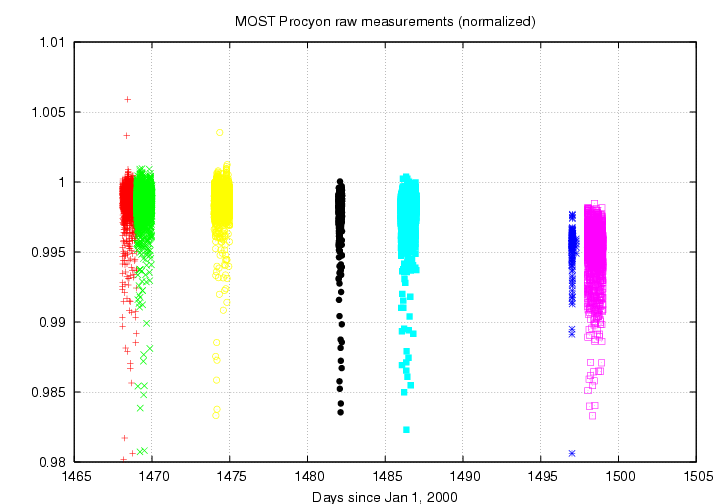
Was this due to the instrument, or due to a change in the intrinsic luminosity of Procyon? There were three secondary stars measured along with Procyon, from the "normal" region of the CCD not covered by microlenses. I looked at the two brightest of these secondaries. In order to decrease the random scatter, rather than show the measurement in each 30-second exposure, I plot below the median of all measurements over 530 exposures (spanning about 3 orbits).
One of the secondary stars is obviously a variable:
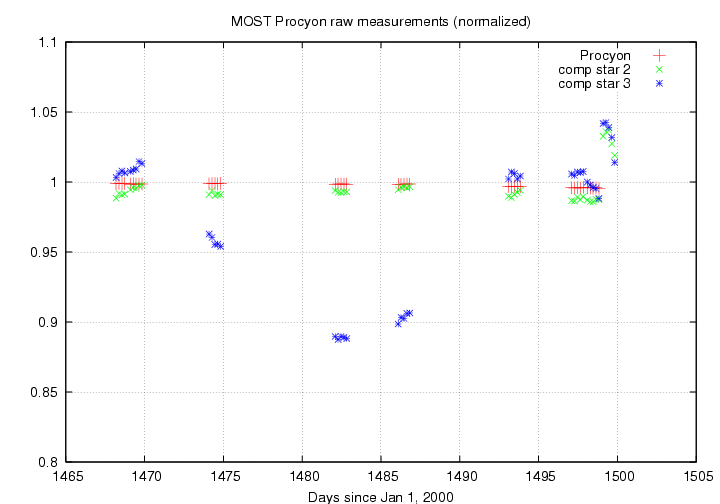
But the other star shows a long-term variation in brightness which mirrors that of Procyon.
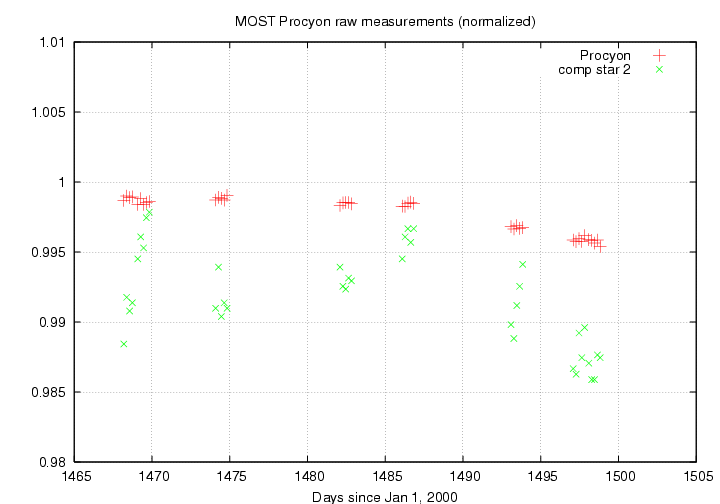
The values I calculated match reasonably well to those in a figure from the MOST team's own paper on their observations of Procyon. Compare my figure above to the top two panels below.
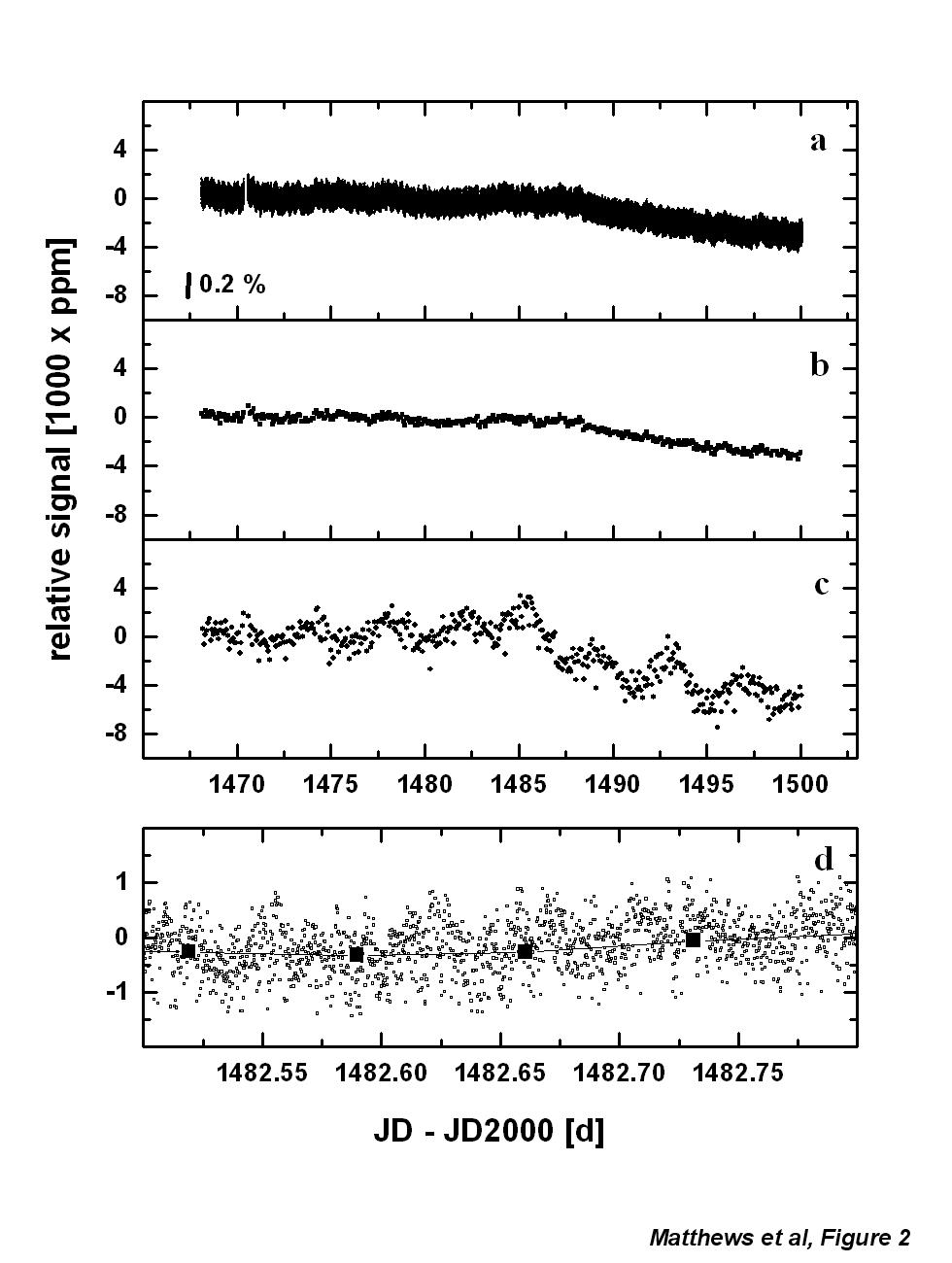
I deduce an overall decrease in sensitivity of a factor of about 0.29 percent over a 30-day period. If one were to project this linearly to a full year, it would amount to a decrease of about 3.5 percent.
Two of these three of these CCD cameras have suffered measureable losses in sensitivity over timescales of years, and there are indications that the third will as well.
Bruce Woodgate reminded me at the end of my presentation that the SNAP project is developing p-channel CCD devices, which will be much less sensitive to CTE losses than the CCDs in WFPC2 and ACS. Good!
ACS
MOST